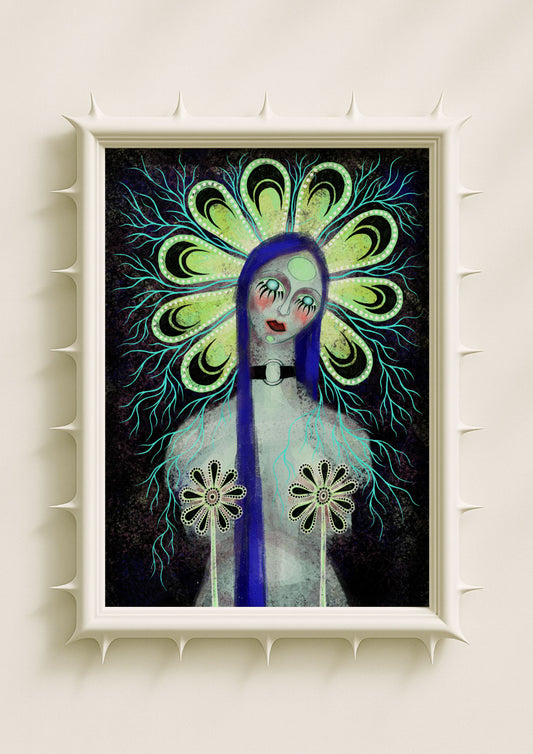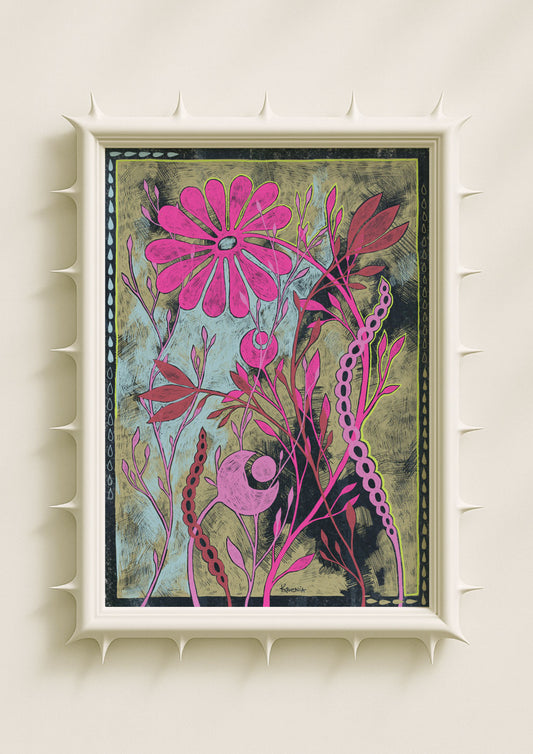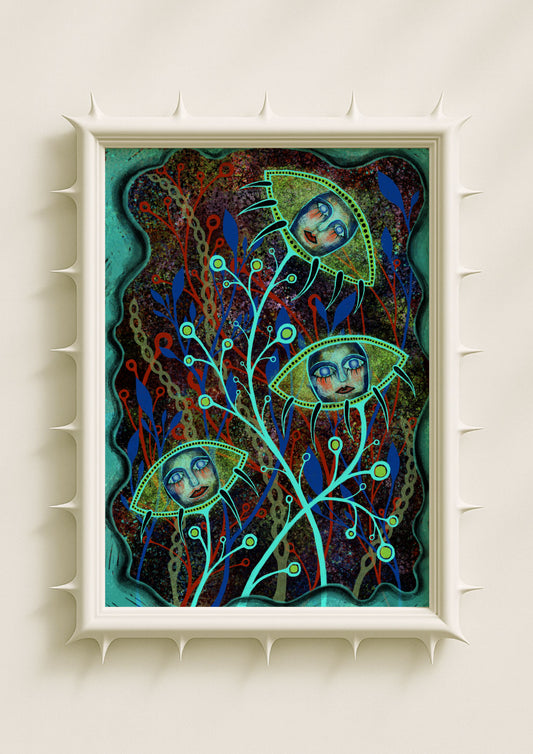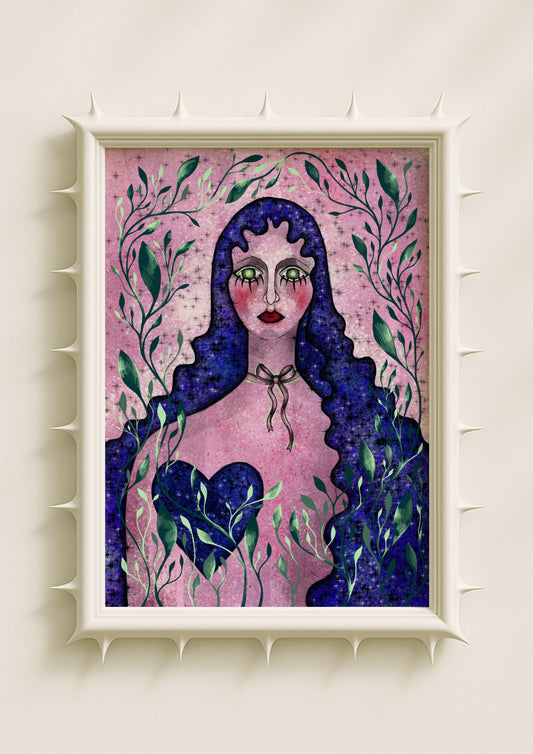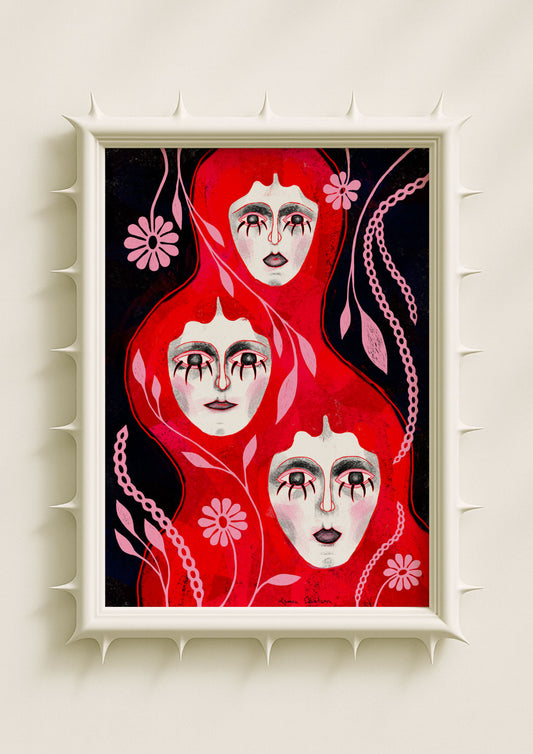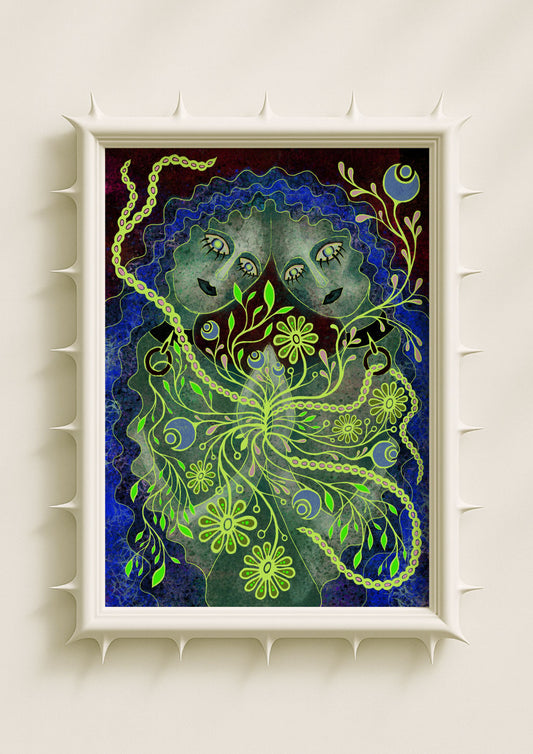Some objects carry more weight than their physical presence. A small print on the wall, a symbolic poster placed above a desk, a portrait watching quietly from the corner — these pieces can influence how a room feels and, more subtly, how we feel inside it. Symbolic décor works this way: it turns ordinary interiors into emotional landscapes. It anchors memory, identity and atmosphere through images that speak a language deeper than aesthetics alone.
When I think about symbolic décor, I think about the objects people keep close without always knowing why. A botanical poster that reminds them of a childhood garden. A surreal portrait that reflects a part of themselves they’ve never put into words. A small talisman-like artwork that brings a sense of calm on difficult days. These pieces don’t just decorate; they become emotional companions.
Why Certain Objects Feel “Alive”
There’s a psychological reason some décor feels charged with meaning. Humans naturally assign emotional value to shapes, colours and symbols. A circle offers safety. A face — even an abstract one — creates connection. A flower can hold tenderness, longing or resilience depending on its form. This instinctual reading of symbols is older than language, which is why symbolic décor resonates so strongly in contemporary homes.

When I create prints rooted in symbolism, I think about this subconscious recognition. A pair of eyes surrounded by flowers. A figure surrounded by soft shadows. A botanical form that leans toward surrealism while still feeling familiar. These pieces often act like emotional anchors because they echo something intuitive — a gesture, a memory, an inner mood. They ground a space not through logic, but through feeling.
Objects as Mirrors of the Inner World
Symbolic décor works almost like a mirror. The viewer doesn’t simply look at an artwork; they use it to understand something about themselves. A dreamlike poster might reflect a need for quiet imagination. A darker symbolic piece might resonate with someone exploring their own depth or complexity. A naive floral print might feel comforting for someone craving softness.
I often hear people describe my work in this way — as if they saw a part of themselves inside the portrait or the botanical form. This is the emotional magic of décor: the right object doesn’t impose meaning; it releases it. It lets someone recognise their own inner world in the colours, shadows or symbols.
How Symbolic Décor Shapes Atmosphere
Interiors are emotional environments long before they are visual ones. A symbolic print can shift the energy of a room more than a piece of furniture ever could. A portrait with a calm expression slows the tempo of a space. A graphic symbolic motif can sharpen the atmosphere and make a room feel more intentional. A surreal artwork can invite imagination in places where routine tends to dominate.

When I think about where my artworks live — bedrooms, reading corners, studios, quiet hallways — I imagine how they behave in light, how they hold the mood of morning or evening, how they interact with shadows. Symbolic décor works in layers. It doesn't just sit on the wall; it breathes with the space.
The Role of Memory and Story
Symbolic objects often carry a sense of story, even when the story isn’t explicit. This is why they work so well as emotional anchors. They hold traces of places, cultures, seasons, symbols or personal histories. A viewer might connect to a specific detail — the shape of a botanical petal, the curve of a line, the softness of a face — and suddenly the artwork becomes a small vessel for memory.
In my own practice, I draw from folklore, dream symbolism, emotional archetypes and fragments of visual culture. These influences create artworks that feel familiar even when the imagery is surreal. The familiarity helps the piece settle into a home effortlessly, as if it belonged there all along.
Why We Seek Emotional Anchors in Our Spaces
Modern life moves quickly, and interiors often become the ground we return to in order to find stability. Symbolic décor acts as that grounding point. It brings meaning to neutral spaces, emotions to orderly rooms, and connection to environments that might otherwise feel impersonal.

People may not always realise they’re choosing décor for psychological reasons, but they do. They choose the artwork that calms them after a long day. They choose colours that regulate their mood. They choose symbols that remind them of who they want to be. The décor becomes a silent companion — not loud, not theatrical, but deeply supportive.
This is why symbolic pieces, especially the ones infused with emotional softness or quiet surrealism, have such a natural place in modern homes. They don’t demand attention; they offer presence.
The Quiet Resilience of Meaningful Objects
In the end, symbolic décor gives shape to the parts of ourselves that don’t always have language. A symbolic poster becomes a touchpoint, a reminder, a source of quiet grounding. It frames the emotional life of a home gently and continuously.
When I create symbolic artwork, I think about this long after the piece leaves my studio — how it will live in someone’s room, how it will grow familiar over time, how it might become the first thing they notice in a moment of pause. Meaningful objects endure because they keep offering something, even in silence.
